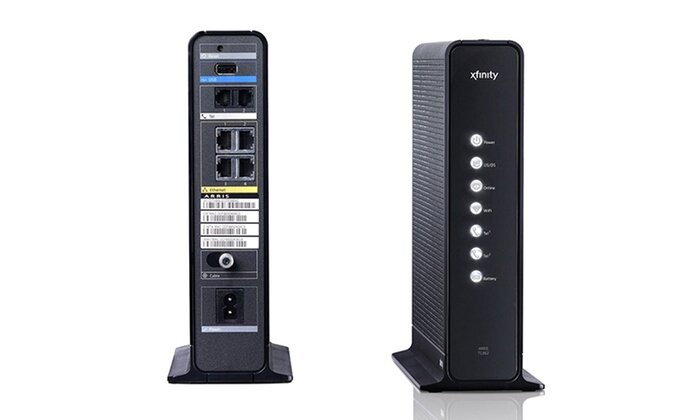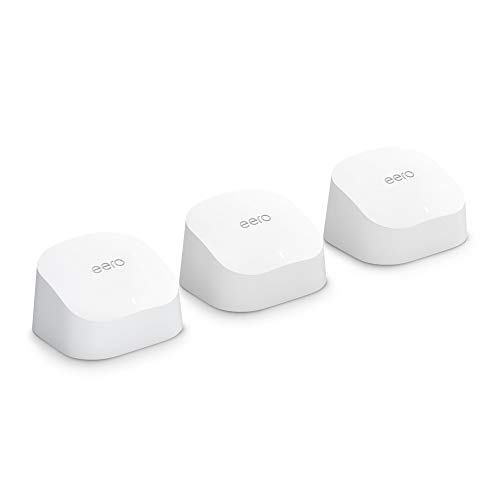Wi-Fi Isn't Magic: Tips For Planning A Home Network
Originally Posted: January 1st, 2020
Wi-Fi Isn't Magic: Tips For Planning A Home Network
Wi-Fi Isn’t Magic. It’s Physics.
Without going into too much detail, Wi-Fi is a radio wave that can carry data. Imagine two people holding a jump rope, one at either end. If one person raises and lowers their arm quickly, the energy travels down the rope to the other person, and they sense the up and down motion. Wi-Fi works similarly. A wireless access point sends out a carrier wave, which is then modulated. Small changes in the received signal are interpreted as 1’s and 0’s. Magic.
In a wired network, electrical signals travel along a wire and are received on the other end. Wi-Fi does the same thing, but traveling through the air in the form of microwaves. A transmitter sends an alternating current into an antenna which creates electric and magnetic fields that propagate in all directions as microwaves. At the receiving end, the process is reversed. The waves reach the antenna, where they are turned back into an electrical signal. If the transmission was successful, the data received should be the same as the data sent. This is where a lot of the unreliability of wireless communication comes in — so much is lost in free space, or due to interference.
If I’ve lost you, consider this analogy:
A Wi-Fi network is like a walkie-talkie.
For a walkie-talkie to work, you need to hear the other person, you need them to hear you, and you need the communication to happen with a low delay, or latency. If you are screaming into the radio, the other person might not be able to talk back. If the latency is too high, you both end up waiting before you know it’s OK to respond. You also have to worry about range and interference. Imagine talking over static, or trying to have a conversation while someone is already having one on the same channel. Talking over each other means that no one can hear anything. Wi-Fi networks, like walkie-talkies, are half-duplex. Only one device can be talking on a channel at a time.
So what happens when you have 20, 30, 40 devices around your home connected to one access point? How can they all access the network if only one can transmit at a time? Part of the answer is that we are talking about very small fractions of time. If the channel is quiet for 9 millionths of a second, a transmitter can send. All Wi-Fi devices coordinate the use of the shared wireless channel, and only transmit when it senses the channel is not in use. If two devices communicate at the same time, a collision occurs, and both devices have to re-transmit.
Newer generations of Wi-Fi add additional abilities to avoid collisions, like beamforming and multi-in multiple-out (MIMO). Modern Wi-Fi networks are capable of chaining multiple radios together for faster speeds (MIMO), or allowing multiple users to communicate at the same time (MU-MIMO). This requires both the access point, end device, and the environment to support it, though. Improvements in the latest generations of Wi-Fi is one of the reasons it’s important to have good equipment and understand what to look for when purchasing.
Dealing with Interference
Bluetooth, microwave ovens, florescent light bulbs, car alarms, baby monitors, radar, physical objects, and nearby Wi-Fi networks can all cause interference. Interference is always present, the term for this the noise floor. As long as your signal is stronger than the noise floor, you can communicate. If you live in an apartment, dorm, or anywhere with a lot of Wi-Fi networks or sources of interference nearby, you should take the time to analyze the spectrum. Expensive equipment and software are required to fully analyze wireless spectrum, but there are free options available too. NetSpot is an app that shows you details on the wireless networks in your area. If you want a quick tutorial on how to use it and how it relates to channels and Wi-Fi performance, here’s a great video breaking that down from Keith Barker at CBT Nuggets.
If you want a more in-depth answer to how Wi-Fi works, check out Wi-Fi 101: How Wi-Fi Works, from Electricity to Information.
More Power Isn’t Always The Answer
For the most reliable connection and fastest speeds, you want to be close to your access point. The less space between the transmitter and receiver, the stronger the signal is. With a really strong signal, your access point can use a more complicated modulation scheme, which encodes more data and gives you faster speeds. As you travel away from the access point, the complicated modulation schemes become unintelligible, and the access point has to lower the complexity of the modulation to reach you. That is why you get fast speeds near an access point, but as you walk away it slows down. If you get far enough away, no data can be sent.
It’s natural to think that more transmit power means better results, but this is not true with wireless networks. Having one access point transmit at a really high power, or set to be “loud” in our walkie-talkie analogy, can cause issues. End devices need to be able to hear the AP, but they also need to be able to talk to it and be heard. Raising the transmit power for the AP raises the distance it covers, but it also raises the noise floor, making the wireless experience worse for everyone nearby.
Especially if you have multiple access points, you want to have them as quiet as possible, while still providing a strong signal. If you need to cover a large area, multiple quiet access points will perform better than one loud one. If you are only covering a small area, or have low levels of interference, one AP might be all you need.
Wi-Fi Uses Two Different Bands, 2.4 and 5 GHz. A Few Differences:
2.4 GHz is used by many other things besides Wi-Fi, and interference is more common on 2.4 GHz than on 5 GHz.
2.4 GHz has 3 effective channels to use. Imagine a 3 lane highway. If all three lanes are clogged with traffic, you’re out of luck.
5 GHz has 23 channels, making interference less of an issue when it does occur.
Channels can be used together, meaning 5 GHz signals can be much faster than 2.4 GHz.
2.4 GHz signals travel further and through walls better than 5 GHz.
5 GHz will travel roughly half as far as 2.4 GHz signals will. If you want to blanket a big area in fast, uniform, 5 GHz signal, you should consider multiple APs or a mesh system.
A Quick Note On Wi-Fi Generations
802.11ax, also known as Wi-Fi 6, is the newest generation of the Wi-Fi standard. It features a lot of improvements over the previous 802.11ac, including OFDMA, MU-MIMO for uplink and downlink, and a lot of efficiency and speed improvements. Where 802.11ac only functioned in the 5 GHz spectrum, Wi-Fi 6 will operate in all ISM bands between 1 and 6 GHz when they become available. Most of the improvements that come with Wi-Fi 6 focus on making crowded networks perform better, rather than increasing single-client speeds.
To get all of the benefits of Wi-Fi 6, you will need an access point and a device that supports it. For example, the iPhone 11 and 11 Pro were the first phones from Apple to support Wi-Fi 6. As time goes on, more and more devices will be Wi-Fi 6 ready, and our networks will be better than ever. If you are looking to purchase home networking equipment, Wi-Fi 6 capable devices will be the most future-proof.
Wi-Fi 5 is no slouch, though. The previous standard was ratified in 2014, and there are tons of great equipment out there that supports it. Most devices made in the past 6 years will support 802.11ac, and for the foreseeable future 802.11ac devices will be made, just like we still have 802.11n devices on our networks. If your access point only supports 802.11n or older, you should consider upgrading. You will see a big jump in performance if you upgrade to Wi-Fi 5 or 6.
General Requirements For A High Performance Wireless Network:
Support for modern Wi-Fi standards (802.11ac/ax or Wi-Fi 5/6)
Multiple 5 GHz radios at a low to medium transmit power
Low number of clients per access point
Ethernet backhaul for your wireless access points, if possible
Don’t use your ISP’s router
Get Rid Of Your ISP’s Router
You’re probably using something like this right now at home
Seriously, get rid of it. Not only are they a ripoff - charging either per month or a one time fee - but they are generally bad devices. What most people call their “router” is really an all in one device, combining the functions of a router, switch and access point.
A router takes packets from one network (the internet) and sends them to another (your internal home network).
A switch allows you to plug multiple devices in, expanding a wired Ethernet network. Most ISP devices include a 4 port switch for plugging in a few devices. Switches can be chained together as well, allowing for further expansion.
An access point is what creates a wireless signal, bridging the wired network into a wireless one.
One of the biggest problems with ISP devices is they are only one access point. Usually you will get good performance in the room they are in, but it will struggle to reach the far end of your house. To avoid this, most ISP devices set their access point to broadcast as loudly as possible. Like I mentioned before, this does improve the range, but creates other issues. In the past, people would try to expand their coverage with “wireless extenders” which were almost universally awful. This same concept has been improved with newer generations of Wi-Fi and by utilizing multiple radios, and is now usually referred to as a wireless mesh.
To Mesh, Or Not To Mesh
One of the big trends in home networking is mesh networks. Eero, Google Wi-Fi, Netgear Orbi, Linksys Velop, TP-Link Deco, Unifi’s Amplifi HD and Amplifi Alien — it seems like every home networking company offers some sort of mesh system. For a lot of people, it can be the right choice. If you don’t want the hassle of running Ethernet cabling, or setting up a complicated new system, a wireless mesh is a potential solution.
Typically, you would place the base station where your ISP device is now, and then place the extenders, or beacons, further away. Those beacons receive the signal from the base station, and relay to and from it. This allows your Wi-Fi network to reach far corners of your house better, but it is never going to be as good as a system that uses a wired backhaul to the router, like Ubiquiti’s Unifi system. Adding another wireless “hop” increases latency and reduces speeds. When all your access points are using Ethernet to get back to the router, latency is reduced and speeds aren’t as limited.
If you want better Wi-Fi without the hassle, I can recommend the Eero or Deco mesh systems. If you are more technically inclined, Ubiquiti’s Unifi ecosystem is worth a look.



